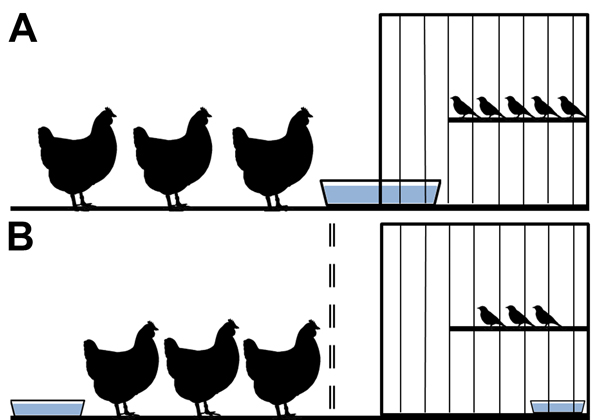Volume 21, Number 4—April 2015
Research
Influenza A(H7N9) Virus Transmission between Finches and Poultry
Figure 1

Figure 1. Design model for an interspecies study of influenza A(H7N9) virus transmission. Birds were housed in a cage-within-a-cage setup with a 30 cm × 41 cm × 41 cm finch cage placed within a 97 cm × 58 cm × 53 cm poultry cage. A) Waterborne transmission was examined by sliding a 15 cm × 25 cm pan containing ≈1 L water halfway into a notched hole in the finch cage. All birds had shared access to the water, but poultry and finches were excluded from physical contact with each other. B) Airborne transmission was examined by inserting an air-permeable cage barrier (represented by double-dashed line) between the poultry and the finch cage and providing separate water supplies so that poultry and finches had no direct physical contact and did not share food or water resources.